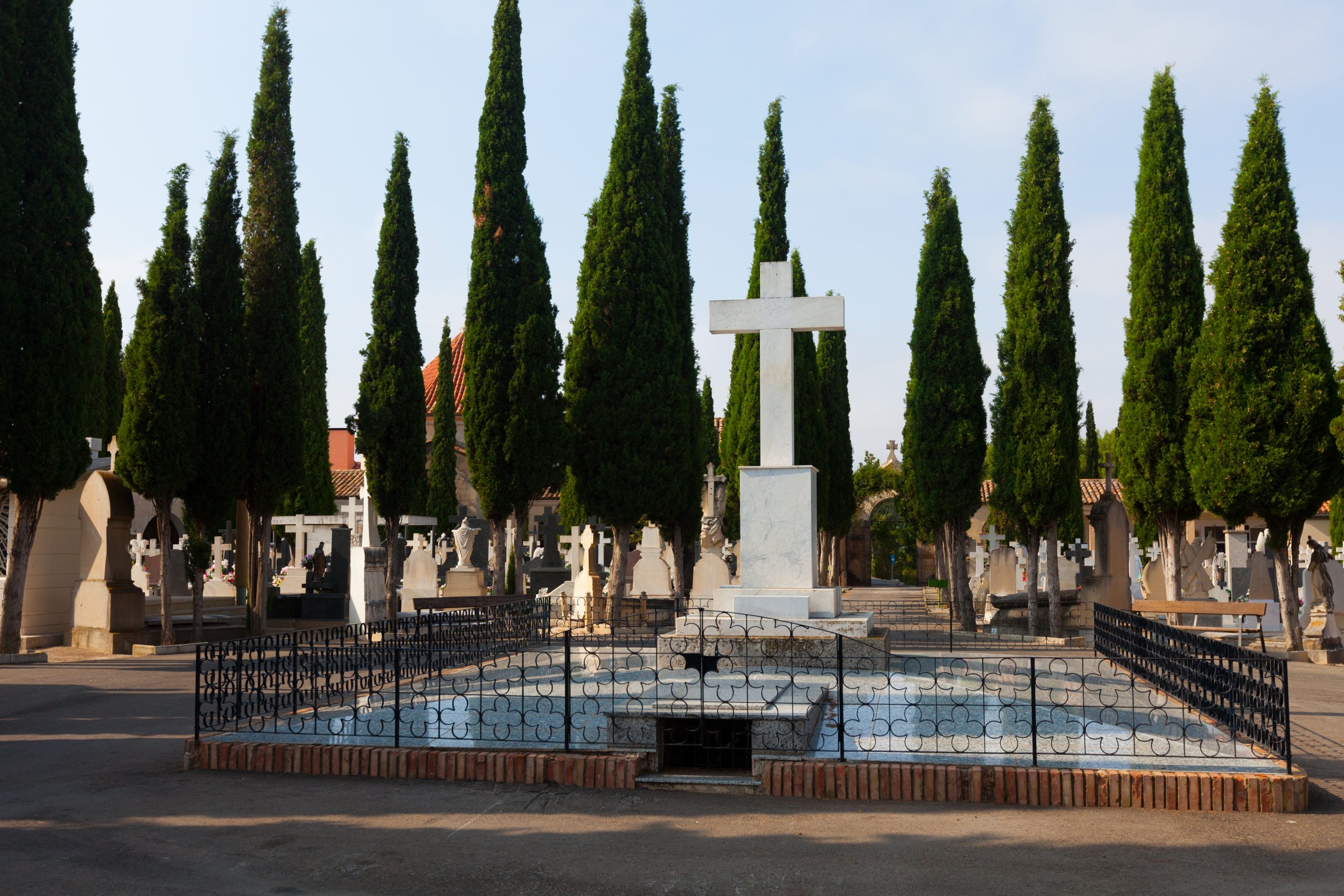The Recoleta Cemetery
The Recoleta Cemetery, located in the northern part of barrio Recoleta, is most famous for being the burial ground of Evita Duarte de Peron, but it actually holds many famous military leaders, presidents, scientists, poets and other important or wealthy Argentineans.
Evita Peron
The story behind Evita’s burial at Recoleta Cemetery is full of deception and controversy. Evita died in 1952 while Juan Peron was still in power and plans were made to bury Evita under an enormous statue representing the ‘Descamisados’ or shirtless ones. Unfortunately, before the monument could be constructed a coup d’état forced Juan Peron to flee the county and Evita’s remains were left without protection.
After Peron’s exile the anti-peronist military forbid Peron’s name and wanted to make it as if Juan and Evita never existed. They took Evita’s corpse from display and hid it in Milan, Italy under the name Maria Maggi from 1955 until 1971. In 1971 when Evita’s remains were released, Juan Peron was in exile; so, Evita’s remains were sent to Madrid, Spain to be near her widow.
In 1973 another change in government brought Juan Peron out of exile and he assumed the presidency for the third time. One would have thought his first move would to bring back Evita’s corpse and continue her monument, but it wasn’t until after his death that Juan’s third wife, Isabel, had Evita returned to Argentina. Isabel had become the first female Argentinean president after Juan Peron’s death in 1974, and to gain popularity among the working class, she had Evita buried next to Juan in the presidential palace .
Evita and Juan Peron only rested next to each other for two year before another military coup took over and wanted the remains out of the presidential palace. Juan’s remains were placed in a family crypt at the Chacarita cemetery. He still wasn’t able to rest in peace; in 1987 the crypt was broken into and his hands were cut off. This shows how controversial the peronist movement was in Argentina history.
Evita’s remains were moved to her father’s family crypt in the upscale Recoleta cemetery. There was much controversy because the upper class didn’t care for Evita and her bastard childhood made the burial right questionable. Fortunately for Evita her remains were secured 27 feet underground covered by layers of cement and steel to stop any would be vandals.
Today Evita’s tomb is the most visited one in Recoleta Cemetery. Her grave is located just East of the cemetery center, and is easily recognized by the hordes of tourist and bouquets of flowers surrounding her tomb.
It is a little ironic that Evita was suppose to be buried under a monument which would represent the ‘Descamisados’, the poor working class, but she ended up in a cemetery which represents the wealthiest of Buenos Aires. Recoleta Cemetery is the most expensive real estate in the city.
Recoleta Cemetery named Buenos Aires first official cemetery
The cemetery started as holy grounds. It was home to friars of the Orden de los Recoletos Descalzos until 1822 when Governor Martin Rodriguez and his minister Bernardino Rivadavia outlawed the practice of using churches as burial grounds. In was on November 17, 1822 that the monks 12 acre orchard and vegetable garden was officially named Recoleta Cemetery and became the first public cemetery in Buenos Aires. On that day about 15 people were buried in the cemetery, mostly the remains from overloaded churches. The first two graves belonged to Juan Benito, a freed black boy, and Maria Dolores Maciel, a young Uruguayn girl. The graveyard has changed so much since this time that no one knows where these two graves are now located.
Architecture
The architecture of the cemetery reflects the passage of time; it is a hodgepodge of everything from Neoclassical, Neogothic, Art Nuevo, Art Deco and even modern styles of over 6,400 mausoleums. The cemetery was not much to look at in the beginning but in 1881 president, Torcuato de Alvear, ordered major reformations. The front gates were built, the inner streets were restored, and the chapel was decorated and expanded with a slight French style. Although the gates have a neo-classical look with tall Greek Columns.
The cemetery is laid out like a well planned city. Neat city blocks with 90 degree corners are well kept and covered in stone and concrete. There are street names on every corner, and even a town center which contains most of the plant life of the cemetery. For the most part rock, marble, stone, concrete and brass are all you can see on the narrow streets between the mausoleums, so it is a treat to see the trees and grass in the center. Each mausoleum represents a different style of architecture from Greek temples and pyramids to fairy tale like castles. Again like a downtown of a city each mausoleum touches the walls of the next, a straight line dividing two different types of architecture. The fronts of the tombs are adorned with angles, carvings of Jesus, stained glass windows and plaques with the names of the deceased. Most of the plaques include the date of death, but very few have the birthdates as is customary in the United States.
Ghosts of Recoleta Cemetery
Although there are numerous important historical figures buried in Recoleta Cemetery the people which are of most interest to me are the ones with unusual stories such as David Alleno, a night watchmen who killed himself, and Rufina Cambaceres, a young girl buried alive.
David Alleno was an Italian immigrate who dreamed of being buried in the prestigious cemetery he guarded at night. He saved enough money to buy a space and built his own tomb. He even traveled back to his home country to find an artist who could carve his own figure in marble. Legend says after the tomb was finished David took his own life inside his grave, but many reputable sources say he died years after the tomb was constructed. Today there are rumors that he haunts the cemetery at night, and you can here his keys clinging as he walks the narrow streets. David Alleno’s grave is located in the far east part of the cemetery, number 81 on the map you can purchase at the entrance.
Another horrifying story is of Rufina Cambaceres, who was buried alive when she was only 19 years old. She is said to of suffered a cataleptic attack and was buried in 1902. Rufina woke up and began screaming and clawing at her coffin. Security guards heard the screams, but by time they were able to open the coffin she had died of a heart attack. It is said there were scratches on her coffin and face. Her mother was filled with guilt. She built a new coffin made of Carrara marble. It is carved with a rose on top and a girl turned to the side as if watching Rufina. The marble sits behind a glass pane, so if she wakes up she can be rescued. Rufina’s grave is near Evita’s, about three blocks south, number 95 on the map.

